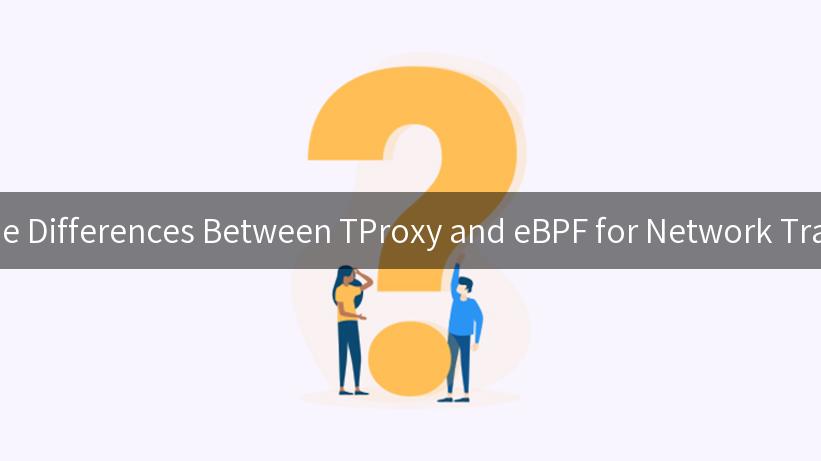
In the era of cloud computing and microservices architecture, effective network traffic management has become a critical aspect of maintaining robust and secure systems. Network traffic management tools allow organizations to optimize resource utilization, enhance security, and ensure high availability of services. In this context, two technologies that emerge as pivotal in managing network traffic are TProxy and eBPF. This article focuses on understanding the differences between TProxy and eBPF for network traffic management while exploring how APIPark and APISIX fit into this ecosystem.
Overview of TProxy and eBPF
TProxy (Transparent Proxy) is a kernel feature in Linux that allows a proxy to transparently intercept and modify traffic to and from a server. TProxy enables the provision of additional functionality such as load balancing, filtering, and logging without the necessity for end clients to be aware of the proxy’s existence. It functions primarily at the network layer, making it a robust choice for applications demanding real-time traffic manipulation and management.
eBPF (Extended Berkeley Packet Filter), on the other hand, is a powerful and flexible mechanism that allows for programmable network packet filtering and processing within the kernel. eBPF programs can run in response to various events (such as packet arrivals or system calls) and can be used for anything from performance monitoring and security enforcement to advanced traffic shaping. The capabilities of eBPF extend far beyond those of TProxy, allowing it to operate at a higher level of abstraction and be integrated into various system components.
Comparison Table: TProxy vs eBPF
| Feature |
TProxy |
eBPF |
| Level of Operation |
Network Layer |
Kernel Space |
| Primary Use Cases |
Transparent Proxying |
Network Observability, Security, Performance, Traffic Control |
| Performance |
Less overhead due to direct interception |
Potentially high overhead if poorly written |
| Complexity |
Relatively simple configuration |
Complex programming interface, requires understanding of C/C++ |
| Integration |
Primarily for proxy-based applications |
Versatile, enables integration with various technologies and frameworks |
| Latency Impact |
Minimal |
Variable based on eBPF program efficiency |
| Support for Advanced Features |
Limited |
Extensive – includes DNS filtering, load balancing, etc. |
| Logging and Monitoring |
Basic capabilities |
Advanced capabilities with tools like tc, perf, bpftrace |
Use Cases for TProxy
TProxy can be particularly beneficial in scenarios where:
-
Seamless User Experience: Implementing a transparent proxy allows organizations to add load balancing or content management without modifying client configurations.
-
Traffic Monitoring: Network operators can monitor traffic patterns and enforce access controls without the clients’ knowledge, making it less intrusive.
-
Security Filtering: By intercepting traffic, TProxy can apply security measures, such as filtering malicious packets based on pre-defined rules.
Use Cases for eBPF
eBPF shines in situations such as:
-
Dynamic Traffic Management: Its programmability allows for adapting to rapidly changing network conditions, optimizing performance dynamically based on real-time data.
-
Enhanced Security: eBPF can be used to implement security features directly in the kernel, providing an additional layer of malware and intruder protection.
-
Performance Monitoring: eBPF allows developers to gather in-depth insights about system performance and bottlenecks without the overhead of traditional instrumentation.
Integrating with APIPark and APISIX
Both TProxy and eBPF can be utilized in conjunction with tools like APIPark and APISIX for more sophisticated and efficient API management solutions.
APIPark
APIPark offers a robust management layer for APIs, providing capabilities for real-time traffic management, monitoring, and analytics. With its features like Basic Identity Authentication and APIKey management, APIPark ensures secure and efficient API usage. Integrating TProxy within APIPark can further enhance transparency in API calls, potentially improving load balancing and filtering mechanisms for API management.
APISIX
APISIX, a dynamic, real-time API gateway, benefits significantly from eBPF’s capabilities by integrating deeper traffic routing and management strategies. eBPF can be employed to make intelligent routing decisions and apply rate-limiting directly on the server side. Additionally, the ability of eBPF to monitor performance metrics empowers APISIX to optimize API responses dynamically, enhancing user experience.
Example of API Gateway Configuration
In the context of utilizing APIPark and APISIX, here’s an example of how to configure an API gateway that uses both TProxy and eBPF.
plugins:
- name: tproxy
service: your_service_name
config:
listen: "0.0.0.0:80"
tproxy: true
- name: prometheus
config:
metrics: true
In this configuration, the tproxy plugin allows traffic to pass transparently, while the prometheus plugin enables monitoring via eBPF for better observability.
APIPark is a high-performance AI gateway that allows you to securely access the most comprehensive LLM APIs globally on the APIPark platform, including OpenAI, Anthropic, Mistral, Llama2, Google Gemini, and more.Try APIPark now! 👇👇👇
Conclusion
Both TProxy and eBPF play significant roles in modern network traffic management, albeit with distinct operational scopes and capabilities. While TProxy provides a straightforward approach to transparent proxying, eBPF’s programmability allows for flexible, real-time network management solutions across a multitude of use cases. The integration of these technologies within API management frameworks like APIPark and APISIX amplifies their efficacy, allowing organizations to build more secure, efficient, and responsive network architectures. By understanding the nuances of TProxy and eBPF, businesses can make informed decisions about which technology best addresses their specific network traffic management needs.
In summary, whether you are aiming to enhance performance with eBPF’s capabilities or streamline proxy functionality with TProxy, both tools can provide immense value when strategically implemented in the evolving landscape of network management and API gateways.